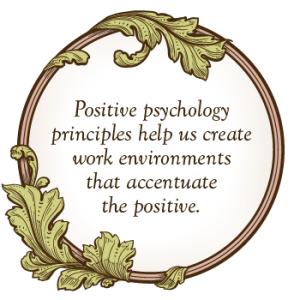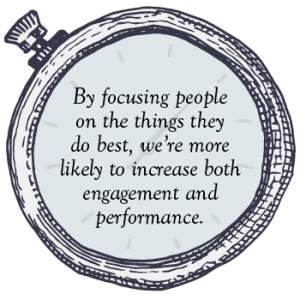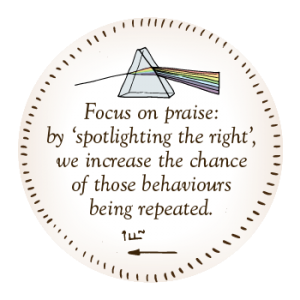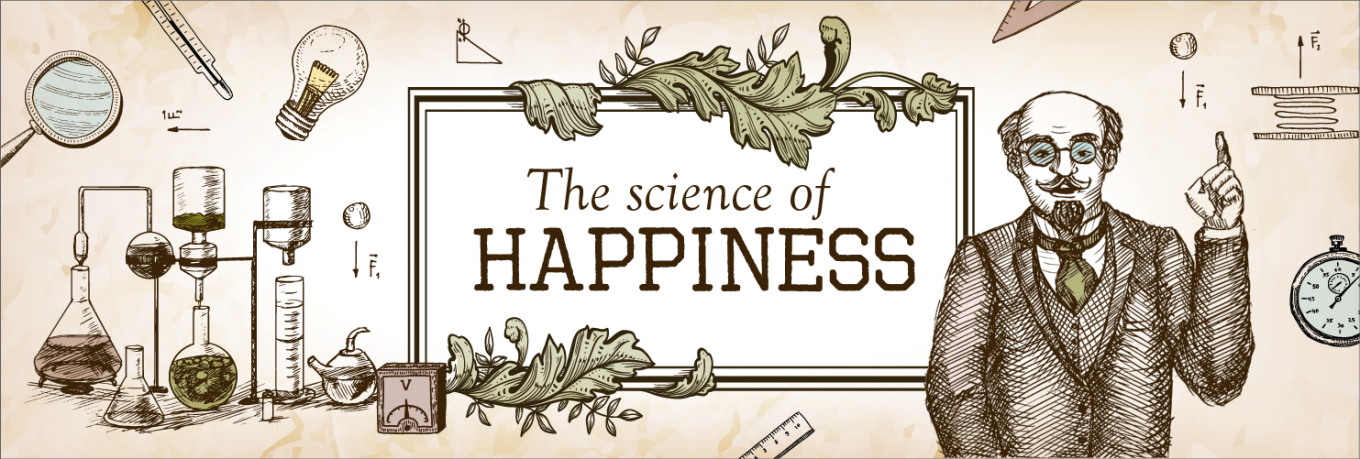Walk into any bookshop ten years ago and you’d struggle to find a single book on the science of happiness. Now, you’ll find dozens.
Modern life is making many of us unhappier. But the groundbreaking findings of positive psychology over recent decades have uncovered practical steps we can take to change that.
And those same principles can help us build a more engaged workforce and become better communicators and managers.
So what is positive psychology?
Much of our time is spent looking at problems and trying to fix them – often with limited results. Positive psychology is about looking at what is working, rather than what isn’t. Looking at strengths rather than weaknesses. Nurturing the best things rather than just trying to fix what’s broken.
Positive psychology principles can help us create work environments that accentuate the positive rather than the negative. Here are five ways to put some basic principles into action.
Look for the bright spots
Research shows we naturally pay more attention to negatives than positives – missing out on opportunities to learn from areas where things are working particularly well.
In their book Switch, Chip and Dan Heath call these areas the ‘bright spots’. If we understand what’s working and why, shining a light on those bright spots gives us a better chance of multiplying those benefits.
When international facilities company Sodexo needed to rapidly increase engagement across hundreds of sites, they interviewed their best people managers to discover the practical actions they took with their teams on a daily basis. These ‘bright spot’ managers then played a central role in Sodexo’s Focus on Five campaign – designed to spread great behaviours rather than focus on what managers were doing wrong.
Build on strengths
No sane football manager would ask Lionel Messi to play in defence. No concert promoter would ask Ed Sheeran to sing opera.
But we regularly do the equivalent at work.
We all have natural strengths, yet performance appraisals often focus more on addressing our weaknesses. Why not spend more time trying to be brilliant at things we like and are good at, rather than rounding out our weaknesses to be merely average?
If we’re playing to our strengths we’re also more likely to be engaged in our work. In one study of 65 organisations, described in Shawn Achor’s Big Potential, those that celebrated strengths and successes not only had higher engagement, but also achieved average annual productivity increases estimated to be worth over $1000 per employee.
Focusing on strengths doesn’t mean completely ignoring weaknesses. After all, even Lionel Messi needs to help out in defence. But by focusing our team members on the things they do best, we’re more likely to increase both engagement and performance.
Have positive expectations
Studies show that our expectations of events or people can directly affect our experience of them.
It’s known as the Pygmalion effect, and was uncovered in a famous experiment led by Robert Rosenthal. Researchers administered intelligence tests to students in a primary school, then told the teachers who the ‘superstars’ were in their class, based on the results. They instructed the teachers not to mention the results, nor spend any more or less time with those high potential students.
At the end of the year the students were tested again, with the same results. Except … the ‘superstar’ students had in fact originally posted completely ordinary results. They’d been transformed into academic superstars by responding to the belief in them that their teachers had unwittingly and unconsciously conveyed.
Having positive expectations of people and situations can have a dramatic impact.
But the same is true of negative expectations. Many of us may have found this at work: a poor experience with a colleague leads us to believe that all future interactions with that person will also go badly. This not only affects how we approach those interactions, but how they play out as well.
So try to refocus your expectations of those more ‘difficult’ colleagues. After all, as Abraham Lincoln once put it: ‘Look for the bad in people and you will surely find it.’
Boost positive emotions
In Leaders Eat Last, Simon Sinek describes the role of the reward chemicals in our bodies – the hormones that make us feel good. Two are ‘selfish’ chemicals – endorphines mask physical pain, while dopamine rewards us for accomplishment.
But it’s the ‘selfless’ chemicals – serotonin and oxytocin – that Sinek is most interested in. These are the chemicals that encourage us to work together, rewarding us with feelings of security, fulfilment, belonging, trust and camaraderie.
The more we boost these emotions in our workplaces, the more positive our workplaces will be. The key is to give employees opportunities to bond, to work together and to help others. Examples include volunteering, charity sponsorship, peer to peer recognition schemes or social events.
Creating regular face-to-face opportunities for employees to meet, connect and build relationships is also critical. The more familiar we are with each other, the stronger the bonds. Even in the digital age, there’s no substitute for face-to-face contact.
Spotlight the right
Many of us are conservative with our praise, often believing it should be reserved for ‘above and beyond’ achievements.
But as Shawn Achor highlights in Big Potential, praise helps focus our brain on positive behaviours. By ‘spotlighting the right’, we can increase the chance that those behaviours will be repeated.
Managers can spotlight the right by adopting the daily habit of celebrating everyday and seemingly insignificant actions. The way someone deals with a customer or difficultcolleague. A skillfully worded email. Taking an extra minute to find something for a colleague.
Spotlighting small actions may seem insignificant – but if it encourages repeat behaviour, then the overall impact can be huge.
Why not focus as much on what’s going right, as what’s going wrong? On accentuating the positive rather than the negative? You may be surprised at the results.
By Dave Wraith for Alive!
















